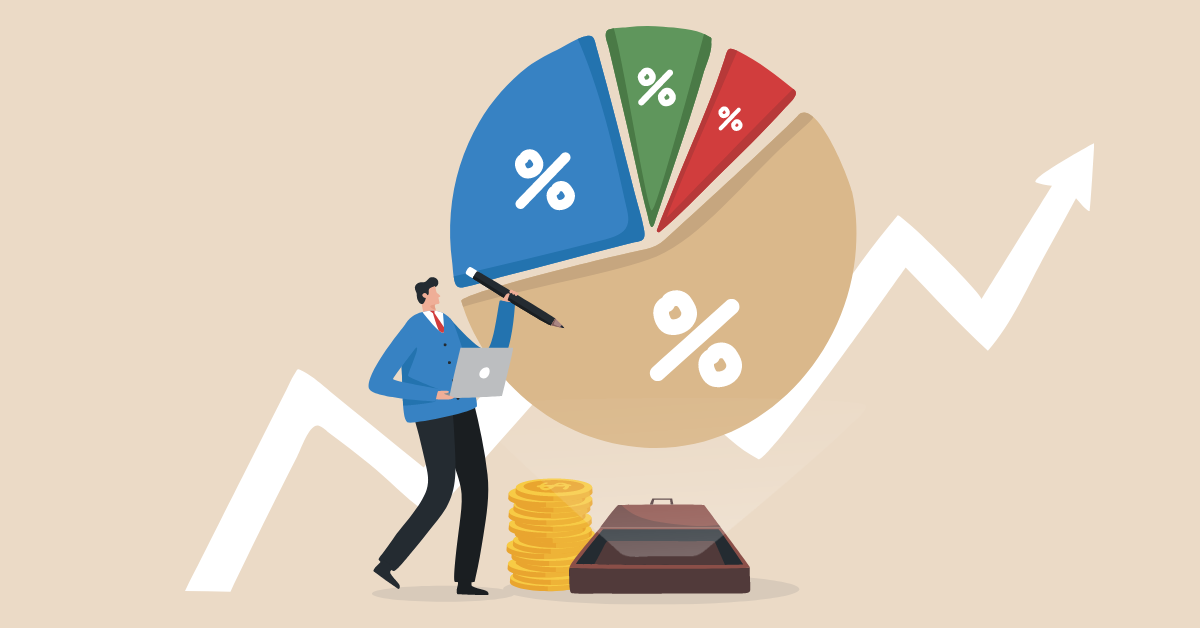
What is a Good Investment Portfolio
Building a good investment portfolio seems to be a highly challenging task. Also, ensuring that it creates wealth for you to lead a comfortable life is cumbersome.
A portfolio investment involves effective asset allocation. It involves diversifying funds to various assets, including stocks, mutual funds, bonds, and exchange-traded funds. With the numerous investment avenues emerging every day, determining a good portfolio investment may be confusing.
Which portfolio can be called a good investment portfolio depends on your goals and your investment stage (early investor vs matured investor). The right mix of investments in your portfolio depends upon your personal financial goals.
However, there are some characteristics that good portfolios have in common.
5 Characteristics of a Good Investment Portfolio:
1. Effective Portfolio Diversification
Diversification in investing is considered the simplest approach for designing a good stock portfolio. It aims at investing in different asset classes having unrelated returns. So, to create a compelling and well-diversified portfolio, it is essential to consider the underlying risk involved in an asset.
Therefore, the effective diversification strategy invests in assets considering the risk involved and the impact of inflation. For instance, if your portfolio is exposed primarily to the performance of companies (equities & high-yielding bonds), then its value would be significantly affected by inflation, creating a high risk for the investor.
2. Long Term Viability
The investment strategies should have a long-term outlook, ensuring the growth in investment with time. You must avoid stocks that may not grow in the next ten years.
The wealth from investment is created by staying invested over a long period. Long-term portfolio stocks aim at creating value in the long term rather than reinvesting frequently.
3. Liquidity
Though it is good to remain invested in the long run, you should not be stuck when there is an emergency. Thus, divide your investment into liquid as well as illiquid funds.
The illiquid funds may offer less volatility and stable returns. At the same time, liquid funds will allow you to make sound investment choices. Invest funds in different assets with varying liquidity degrees to ensure effective risk management.
4. Strong Financials
Some stocks have a higher value than others because of their financial aspects. As an investor, it is essential to scan its financial information to differentiate between good and bad investments. Some critical financial factors to consider are presented in the table below:
| Aspect | Implications |
| Financial track record | The company’s past financial track record does not guarantee a future higher return. But it is better to avoid a company with poor past returns. |
| Fair value | Invest in securities trading at fair value as it ensures better returns. Fair value can be determined by comparing historical data with current market prices. |
| Underlying price of the asset | The price of the underlying asset in investment tends to increase with time. Thus, it is essential to consider the growth potential of an investment. |
5. Cost-Efficiency
The benefits generated by an investment portfolio must outweigh the expenses incurred in managing it. Managing the investment includes advisory & custodian fees, transaction costs, and others.
You need to consider all costs, after-tax, and inflation implications to determine if your portfolio is cost-efficient.
Discover stocks that suit certain filter criteria and dive into details to check their WealthBaskets.
If you are unsatisfied with your portfolio or don’t know how to manage and improve it, invest in WealthBaskets curated by SEBI registered professionals by selecting a mix of equities and ETFs. The WealthBaskets are closely monitored and can help you invest without worrying too much about the safety of your investment.
Conclusion
Proper evaluation and recalibration can turn a poor investment into a profitable one. Of course, you may not consistently achieve an above-market return, but a good investment portfolio will ensure the growth of your investment portfolio over time.
FAQs
The ideal investment portfolio should contain a mix of assets, including cash, stocks, and bonds, to generate the required return. The percentage of funds allocated to these assets depends upon your financial goals, tolerance for risk, and period of the investments. Therefore, there is no ideal portfolio. Each portfolio needs to be customised to meet your needs.
Beginner investors are usually young and have a long-term investment horizon. Thus, they can use an aggressive approach to build a strong portfolio over a long period. The investment approach selected should suit the risk tolerance while creating wealth for meeting long-term financial goals.
The financial goals vary with age. When you are
young, you want to save for holidays, house, and
marriage, and then you want to save for kids. By the
time you are old, you need to save for retirement.
So you need to move your asset allocation toward
less volatile assets offering a fixed income as you
grow.
When you are young, your
allocation will be more toward equities. As you grow
old, you reduce your exposure to equities.
To build an investment portfolio, you need to outline your financial goals and objectives. After that, you can take the help of a professional financial advisor to help you with it. Then you need to determine your risk appetite. You can select investments to meet your financial goals based on your risk appetite.


















